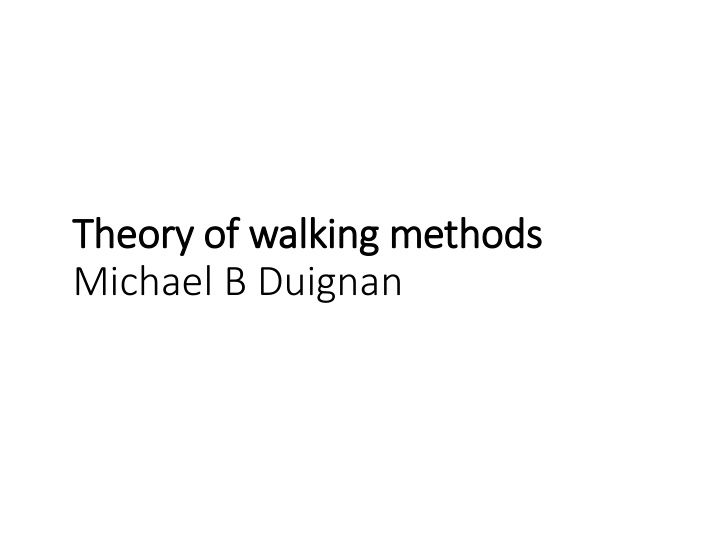



Theo heory of of w walking m metho hods Michael B Duignan
For information about the research underpinning this video visit www.michaelduignan.uk
• What are walking methods; • How can we embed walking methods as a data collection tool; • Why they can be valuable for those seeking to understand socio-spatial interactions.
Walking methodologies, digital platforms and the interrogation of Olympic spaces: the ‘#RioZones-Approach’ (Duignan and McGillvray, 2019 – Tourism Geographies)
#RioZones Approach • Part 1: Theory of walking methods • Part 2: Walking methods in practice - two international case studies • Part 3: Limitations of the walking methods approach and integrating participatory digital methods for disseminating results
Walking methods • Popularised in recent years across a variety of disciplines (anthropology, human geography, sociology and tourism) • Walking can provide access to entangles relationships that exist between humans, non-humans, natural and social environments (Ingold and Vergunst, 2008) • Enables observations, sense making • Springgay and Truman (2018) activating problems and concepts in the midst of an event • ‘Theorising the world through consideration of everyday pedestrian practices of others’ (Bates and Rhys-Taylor, 2017)
• Enable “observation of issues unfolding at street level if only for a short time” (Bates and Rhys-Taylor, 2017) • Sensory dimension is key as city is increasingly viewed as a place where heightened collective sensory experiences are managed and curated (Gandy, 2017) • Identifying such dynamics key in helping to unpack “the systematic description of events, behaviors and artefacts in the social setting chosen for study” (Marshall and Rossman, 1989: 79)
• Observations, field notes, audio narrations • Photography, videography (possibility to geotag) • Interviews, vox pop • Microblog
Recommend
More recommend